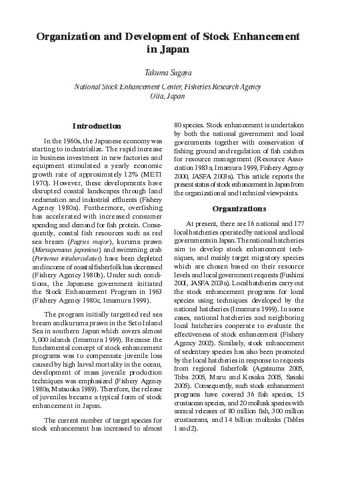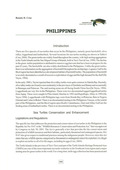Habitat Conservation and Resources Enchancement in Seagrass Beds in Sriboya Island, Krabi Province, Thailand
Share
Abstract
The project on 'Rehabilitation of Fisheries Resources and Habitat/Fishing Grounds through Resources Enhancement', has been undertaken by Southeast Asian Fisheries Development Center/Training Department (SEAFDEC/TD) since 2010 to identify appropriate resource enhancement tools, develop strategies and guidelines for resources enhancement for various types of aquatic habitats, and support capacity building for the ASEAN Member States in the implementation of their respective resource enhancement programs. The activities pursued with local communities in sites selected as critical fishing grounds in marine habitats, included conservation and rehabilitation measures that had been conducted. A deteriorated seagrass bed area in Sriboya Island, Krabi Province, Thailand was selected as one of the pilot sites to mitigate the depleted stocks of a species of an edible sea snail, the dog conch (Strombus canarium) which is commonly harvested by fishers and local communities by hand and/or labor-saving equipment as motorized boats, dredges and diving with air pump supply. However, such massive collection methods of harvesting easily led to drastic degradation of the seagrass bed habitats as well as deterioration of the dog conch population. TD therefore promoted the conservation and optimum utilization of dog conch through public awareness activities. The workshops on Andaman Sea Province Dog Conch Shell Resource Management Measures on August 2013 and 2014 in Krabi Province, Thailand, which was participated in by local stakeholders in Krabi and nearby provinces, led to an agreement and subsequent implementation of several management schemes, such as restrictions on dog conch harvestable size (<6 cm) and types of fishing gear (dredges), as well as banning the use of motorized boats. Furthermore, several types of media that support awareness building, such as posters, stickers, brochures and banners were produced and distributed to several provinces along the Andaman Sea coast. Through such activities, permanent dog conch conservation areas were established by local fishing communities at Sriboya Island in Krabi Province, and Muk Island in Trang Province. Demarcation of conservation areas at Sarai Island in Satun Province and some other areas had been proposed and under consideration by their respective local fishing community.
Suggested Citation
Manajit, N., Theparoonrat, Y., Amornpiyakrit, T., Yingyuad, W., Soonsan, P., Bunlipatanon, P., & Praipanapong, S. (2016). Habitat conservation and resources enchancement in seagrass beds in Sriboya Island, Krabi Province, Thailand. In H. Kawamura, T. Iwata, Y. Theparoonrat, N. Manajit, & V. T. Sulit (Eds.), Consolidating the Strategies for Fishery Resources Enhancement in Southeast Asia. Proceedings of the Symposium on Strategy for Fisheries Resources Enhancement in the Southeast Asian Region, Pattaya, Thailand, 27-30 July 2015 (pp. 117-120). Samutprakan, Thailand: Training Department, Southeast Asian Fisheries Development Center.
Subject
Related items
Showing items related by title, author, creator and subject.
-
Thailand's concerns in endangered species and stock enhancement
Chaengkij, Marnop (Aquaculture Department, Southeast Asian Fisheries Development Center, 2006)The paper provides a comprehensive list of endangered freshwater, brackishwater, and marine aquatic species in Thailand. The Thai Department of Fisheries is breeding some of the endangered species under the “Rehabilitation ... -
Organization and development of stock enhancement in Japan
Sugaya, Takuma (Aquaculture Department, Southeast Asian Fisheries Development Center, 2006)In the 1960s, the Japanese economy was starting to industrialize. The rapid increase in business investment in new factories and equipment stimulated a yearly economic growth rate of approximately 12% (METI 1970). However, ... -
Philippines
Cruz, Renato D. (Marine Fishery Resources Development and Management Department, Southeast Asian Fisheries Development Center, 2004)There are five species of sea turtles that occur in the Philippines, namely green hawksbill, olive ridley, loggerhead and leatherback. Several locations for sea turtles nesting are shown in Table 6 (Cruz, 2004). The green ...





